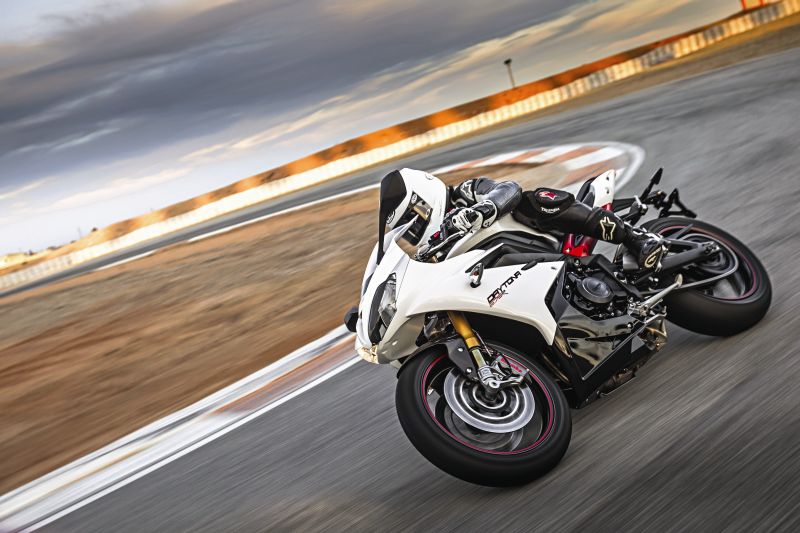“We set ourselves some targets and came to the conclusion that we’d need so many improvements that it was basically a new engine,” says Simon Warburton, Triumph’s product manager. The shorter-stroke layout was chosen to allow more revs and top-end performance. The horsepower graph shows a two PS higher maximum of 128 PS at 12,500 revolutions per minute and a 500-RPM higher rev limit of 14,400 RPM. Although the power and torque curves show most benefit above 10,000 RPM, the old model’s dip at 7,000 RPM has also been filled in, although there’s now a minor dip at about 4,500 RPM.
The cylinder geometry change is just one from a long list that includes higher compression ratio; lighter pistons, crank and alternator assemblies; and re-designed cams and valves. There’s a new slip-assist clutch with a lighter action and a reworked gearbox with slightly lower overall ratios. The cooling system is revised; the bottom-end is re-designed to reduce oil surge under braking.
The low-slung silencers of the white-finished 675Rs lined up in the Cartagena pit lane only hinted at the extensive chassis changes that were enabled when Triumph decided to abandon the Daytona’s original under-seat layout. The repositioned system allowed a new frame with optimised geometry and weight distribution. Moving the engine back by five millimetres allowed new forks with longer stroke.
Despite all that the R-bike felt familiar when I threw a leg over its seat, which, at an unchanged 830 mm, is quite tall (the standard 675’s is now 10 mm lower), but slim enough that most riders won’t struggle to manoeuvre such a light bike. It also felt very nicely put together. The top yoke is made from forged aluminium; the insides of the fairing are neatly trimmed with carbon-fibre, which is also used for the front mudguard and rear hugger. Even some of the bolt heads are neatly machined.
Another new feature of this Daytona is ABS braking, which is included on the R-model and an option on the standard 675. On the R the system is enabled as standard and can be turned off. But that’s not necessary even on track, because there’s also a Circuit mode that allows super-hard front wheel braking and even stoppies and rear-wheel skids.



… [Trackback]…
[…] There you will find 39079 more Infos: bikeindia.in/triumph-daytona-675r-triple-treat-power-agility-stability/ […]…